Rocky Mountain National Park: Bear Lake, wildlife, and tundra
My family and I recently enjoyed a nearly two-week vacation in Colorado, and I’d love to share some photos from Rocky Mountain National Park, a favorite destination for this Texan looking to escape the heat for a little while. Bear Lake Trail is an easy hike around a small, nearly circular mountain lake on the east side of the park. Although the trail is heavily used by visitors, I still find a slow meander around the lake to be a restorative experience.
We’ve walked around Bear Lake many times before, on sunnier days. But this time rain clouds had socked in the lake, making for a dreamy, contemplative hike.
On this still day, the glassy surface reflected a mirror image of the surrounding firs, pines, and mountain ridges.
Although the pine bark beetle has killed off many thousands of evergreens in the park, Bear Lake is still relatively untouched, although we did see stands of dead trees here and there. All part of the natural process, we were told, though it’s still sad to see entire mountainsides of bare trunks and fallen trees.
Shapely, white-trunked aspens are a favorite of mine. Walking through a grove of them, with their fluttering leaves overhead, is almost a transcendent experience.
We saw some cute critters, including this bold golden-mantled ground squirrel…
…and lots of birds, including this small nesting female, who flitted into a crevice under a rock shelf, right in front of our eyes, where she settled on her nest of peeping chicks, which we could only hear, not see.
She was quite safe from predators there, as the rock face was steep, and her nest situated under a overhanging ledge.
I don’t know what this satiny gray-trunked tree is, but its bark was very beautiful.
I spotted a number of wildflowers along the trail as well. though I don’t have IDs for any of them. This is a groundsel…
…and this is cow parsnip (thanks for the IDs, Tina).
Beautiful texture amid the ferny undergrowth
We also drove Trail Ridge Road, which takes you seemingly to the top of the world at 12,183 feet elevation. We took a short walking path through the tundra, admiring alpine plants that eke out a living up here, with a growing season of only about 40 days.
It’s easy to get altitude sickness at this elevation, if you’re not careful. That happened to me one year, when we walked the trail on an intensely sunny day. As I got back in the car, a stabbing headache, sensitivity to light, and severe nausea set in, and all I could do was close my eyes and slump against the window until we got back down to our cabin in Estes Park at 7,500 feet. Luckily, that didn’t happen this year.
We were higher than some clouds.
Later we spotted this elk on the side of the road, and I snapped a few photos through the windshield.
Majestic, no?
In one of the valleys, a sighting of a female moose having lunch in a marshy area stopped traffic on the park road, as several of us pulled over to have a look through binoculars and telephoto lenses. Wildlife sightings are one of the highlights of a visit to Rocky Mountain National Park, along with beautiful scenery and mountaintop vistas.
All material © 2006-2012 by Pam Penick for Digging. Unauthorized reproduction prohibited.


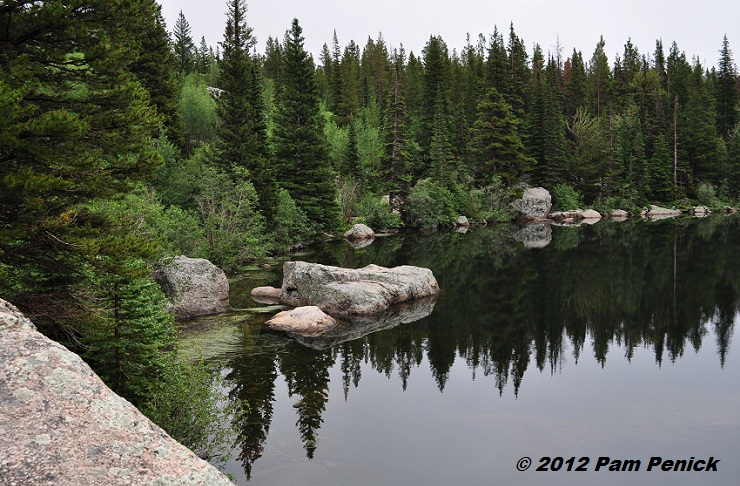
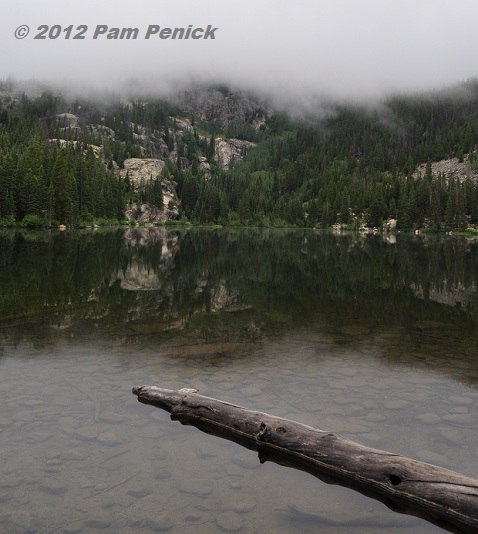
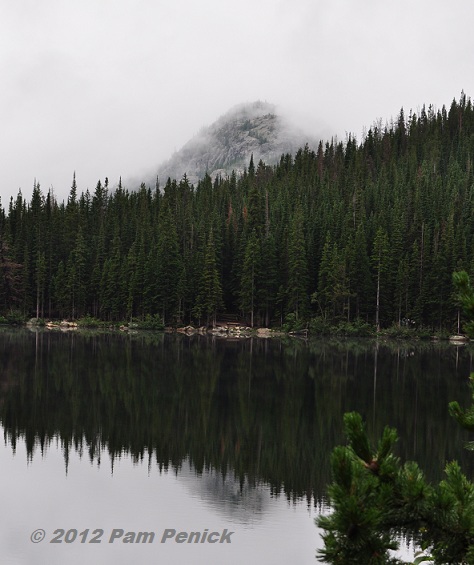
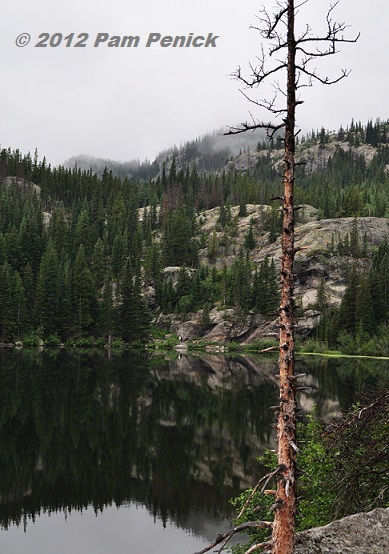
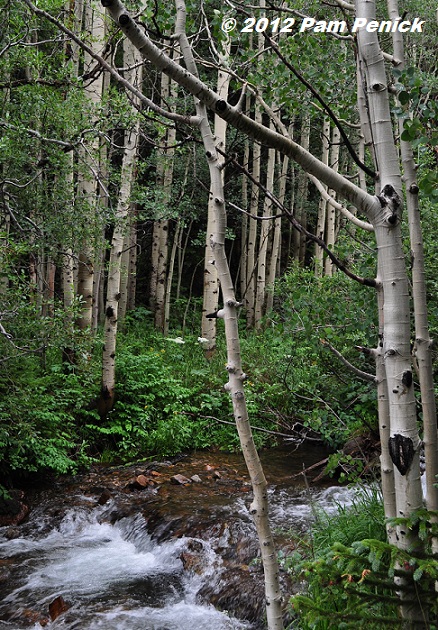
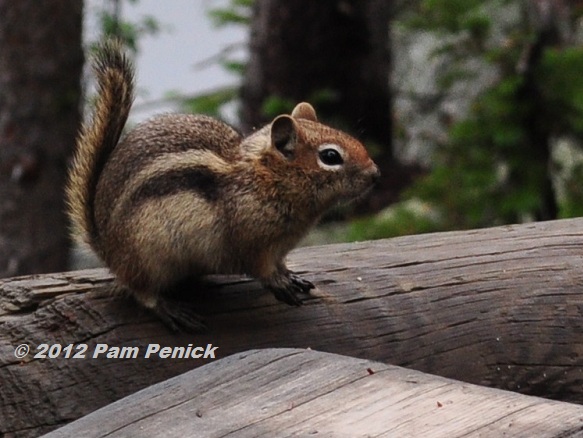
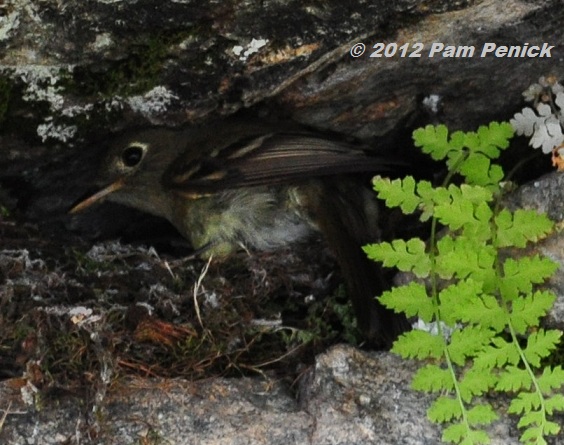
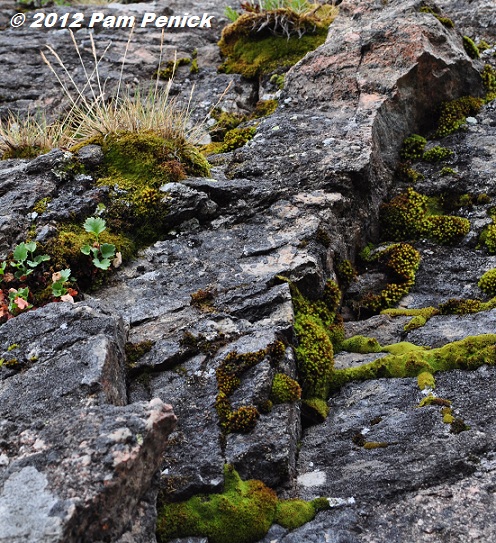
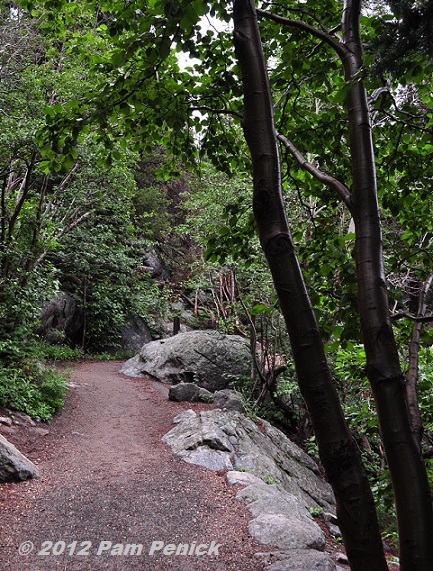
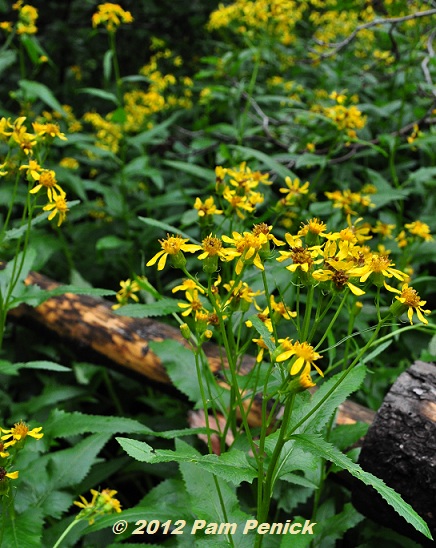
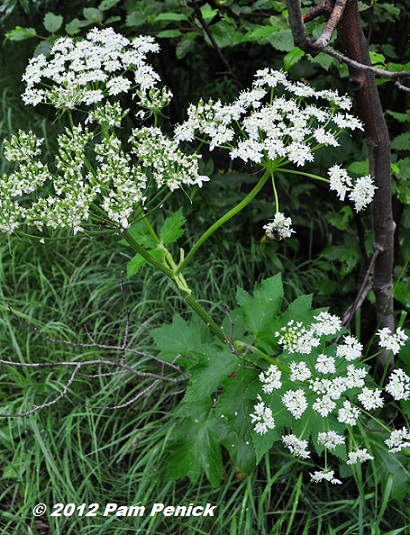
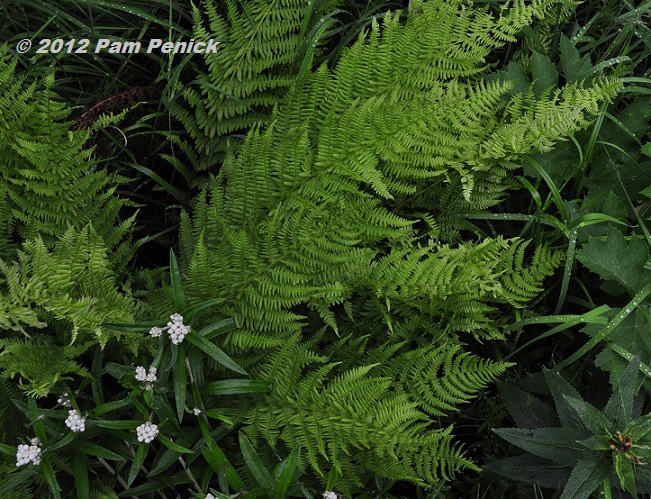
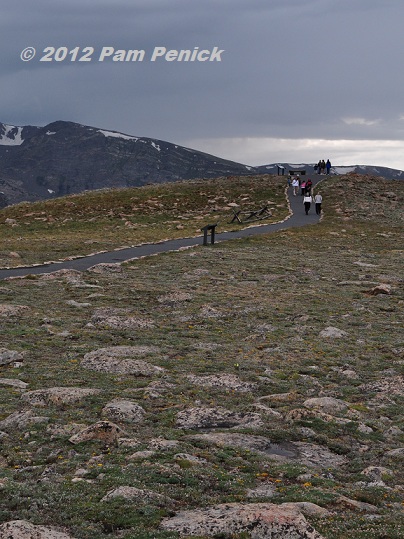
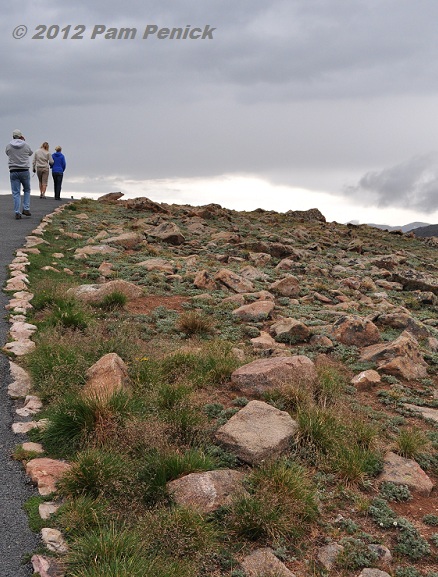
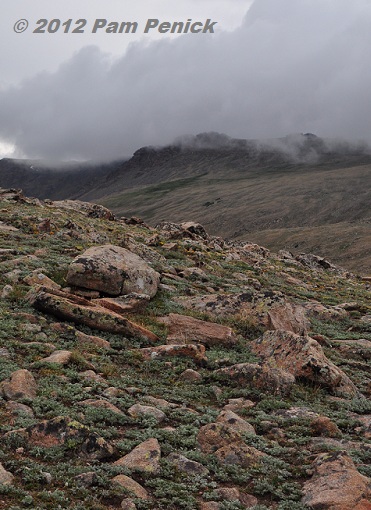
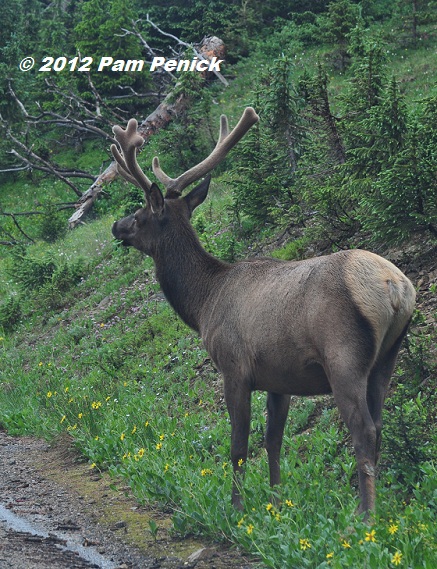
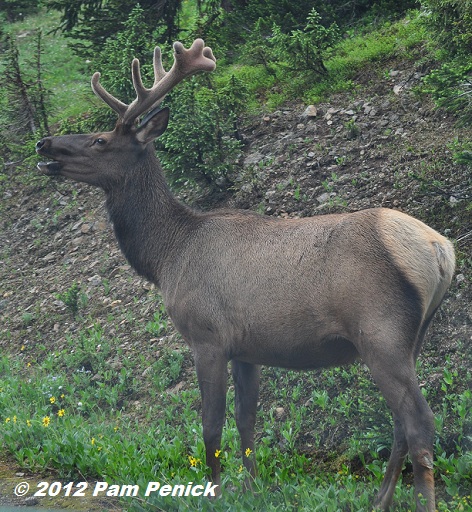
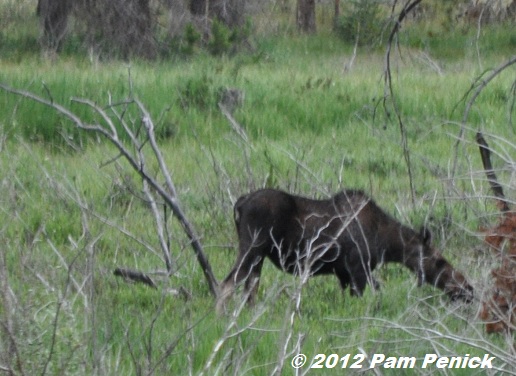
We were there last October during the first snowfall of the season. It was a magical place then. I see that it doesn’t lose any of its magic during the summer.
I love the park in the summer, Dorothy, but the season I really wish to experience is autumn. —Pam
Looks pristine – oh how these pictures make me miss home (British Columbia, Canada)
You must have loved the break from the heat, and that fresh mountain air like no other…
Did I ever, Heather. But coming home to the humidity was a shock. 🙂 —Pam
Looks so cool, like the trip we took there a few years ago. Glad to see the fires haven’t damaged the park. I’ll be in sw Colorado next week. Escape.
Have a great time, Gretchen. It’s a big state and a big national park. We saw no recent fire damage while we were there. —Pam
Absolutely beautiful, Pam…looks like you have a wonderful time! I adore fog…it makes everything seem to mysterious…even places you’re used to suddenly seem so very different 🙂
I agree, Scott. We didn’t even mind the rain, having missed it for so long at home. —Pam
I got back from 9 days of hiking there just last week. The large white flower is Cow Parsnip, the yellow is one of several groundsels that grow there and the smaller white I remember reading about, but it escapes my mind for now. It was lovely and the wildflowers were at their peak (apparently, a little early this year). I especially loved the smaller varieties which grow in the tundra area. Nice photos.
Thanks for the wildflower IDs, Tina! —Pam
You have brought back memories of our trip several years ago. We stayed on the Grand Lake side and went into the park daily for hiking or less taxing sight seeing. We were very close to heading to Colorado for our vacation this year but waited too late to get affordable air fare, opting for Florida instead. I look forward to seeing more of your photos.
Thanks, Les. I’ll have pics of the Denver Botanic Gardens up soon. I think it was your photos of a few years ago that inspired me to make time for a visit. —Pam
Ah, yes. I remember it well! Rocky Mountain National Park is my extended family’s usual destination for reunions. Incredible part of the country, and Bear Lake is a great place to hike-even with small kids. Great photos!
Thanks, PP. The Rocky Mountains would be a great spot for a family reunion, located midway in the country and with pleasant summer weather and lots of things to do and see. —Pam
Last time there was in ’79, after my father retired to Denver. Was incredible then, but not as awesome of weather as your trip…talk about serenity. I can almost smell the scents of everything up there.
David, funny you should mention the scents, as I neglected to in my post. The entire hike around Bear Lake smelled like Christmas to us. All those firs and pines, I suppose. I just kept deep-breathing it all in, but it did make me wonder what Christmas smells like to Coloradans, who get to enjoy that scent all year long. —Pam
Wow, what a beautiful place! I love the mountains. It is so exciting to see all the wildlife there that one doesn’t normally see.
Yes, that’s part of what we enjoy about it too, Indie. —Pam
Beautiful! And to think last year at this time you were just about to embark on a PNW adventure! I treasure those memories and I’m so glad to have had you visit.
So am I, Loree! That was such a great trip—ah, memories. Still waiting for the Danger Gardener to visit Austin though… —Pam
A wonderful place to escape to in the heat of a Texas summer. We drove the high road, in early September, a couple of years ago. There were beautiful alpines despite the arctic-like wind that blew us along the trail. One of our national treasures.
It sure is, Jenny. And yes, it can be quite cold atop those mountains. —Pam
I remember this hike from a rainy day back when I was 8 or 10. Thanks for bringing back memories.
Good memories, I hope, Liz. I hope my kids will remember it for a long time too. —Pam
wow! your elk photo is absolutely stunning. looks like a beautiful place!
That was pure luck to see him so close to the roadside. I was driving when I took that picture, Louis! (Very slowly, I might add.) —Pam
Thanks for the memory trip. I lived in Boulder for 15 years and spent so much time in the park it felt like my backyard. Just looking at your pictures made me feel cooler.
Lucky you for that time spent in Boulder and RMNP. It’s a beautiful place. —Pam
Lovely documentation of a magical place.
But the problem with pine beetles killing all the trees is NOT natural – in a natural world, there is a mix of ages of trees as well as, in many cases, a mix of species of trees that will also be spaced out more. When trees are farmed and grown as a single-age monoculture, all the trees are susceptible to the beetle invasion. And growing them as close together as possible, makes it really easy for the beetle to move from tree to tree. Natural pine beetle damage is usually just to a small group of trees.
This is one of the many reasons many of us worked so hard to get the Forest Service to think of more than the just growing the maximum number of pine trees and to try to get them to leave other trees and plants that make up a natural forest.
I don’t know enough about this issue, Marilyn. But surely you’re not talking about the trees growing in the national park, because they weren’t planted by the forest service. —Pam
One of my favorite places in the world. I could feel the cool calm of this place. Beautiful photos Pam.
Thanks, Lisa. It’s a great place for play or relaxation. —Pam
Beautiful pictures of what sounds like a wonderful vacation! I was going to identify the two wildflowers for you, but I see someone else already did. I love the cow parsnip, it has such cool big leaves. I don’t know the gray-trunked tree, but it is interesting, almost doesn’t look real.
Thanks for confirming the IDs, Alison. I need to go add them to my post. —Pam